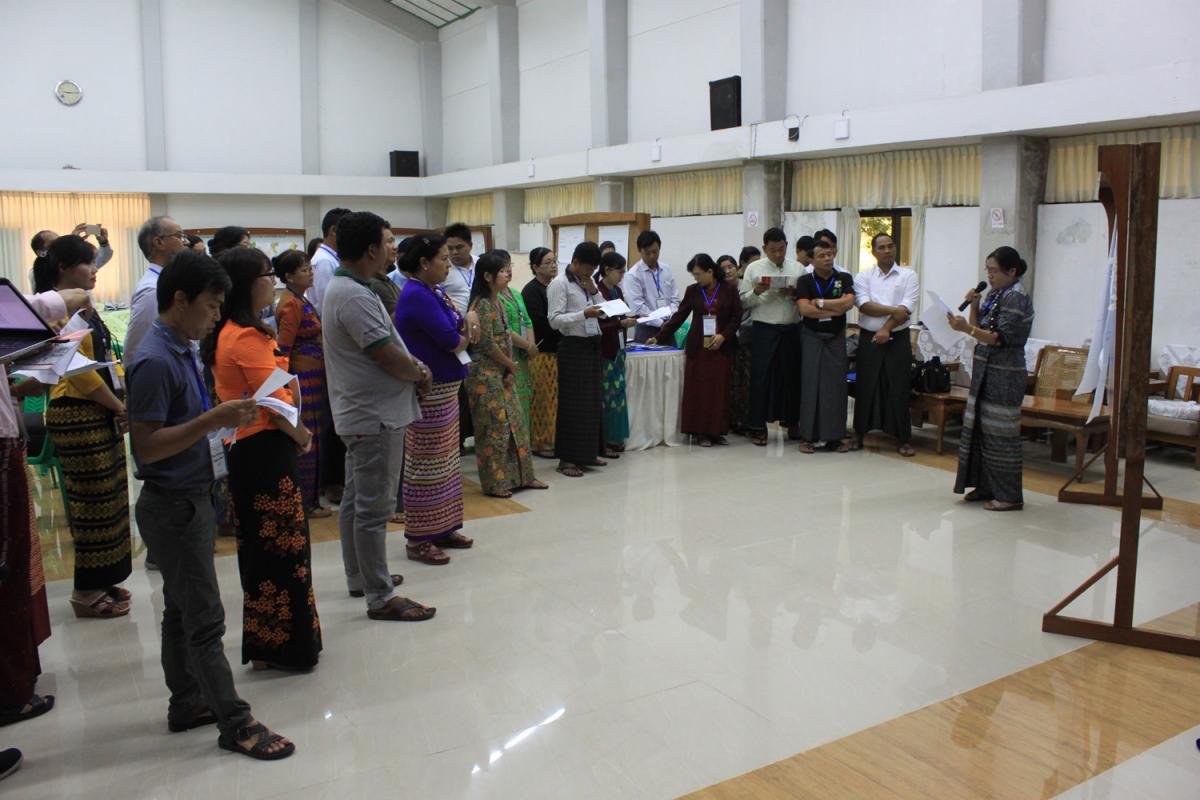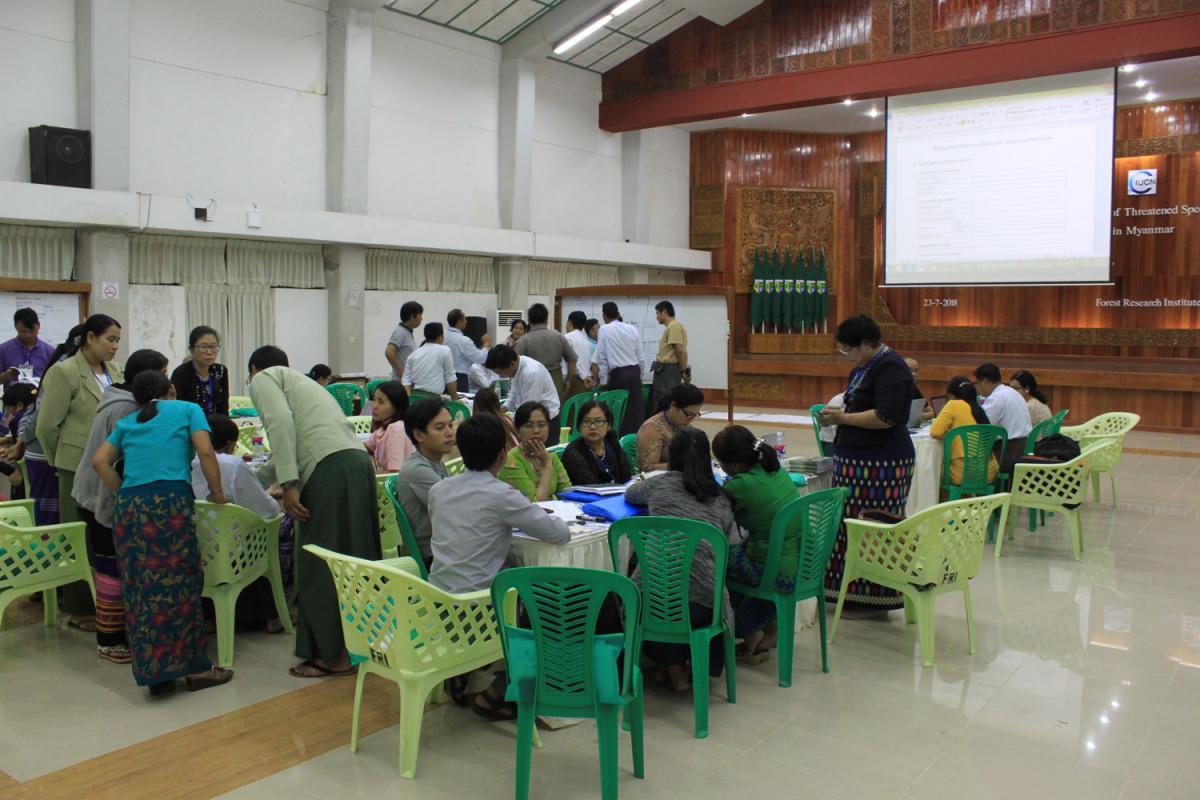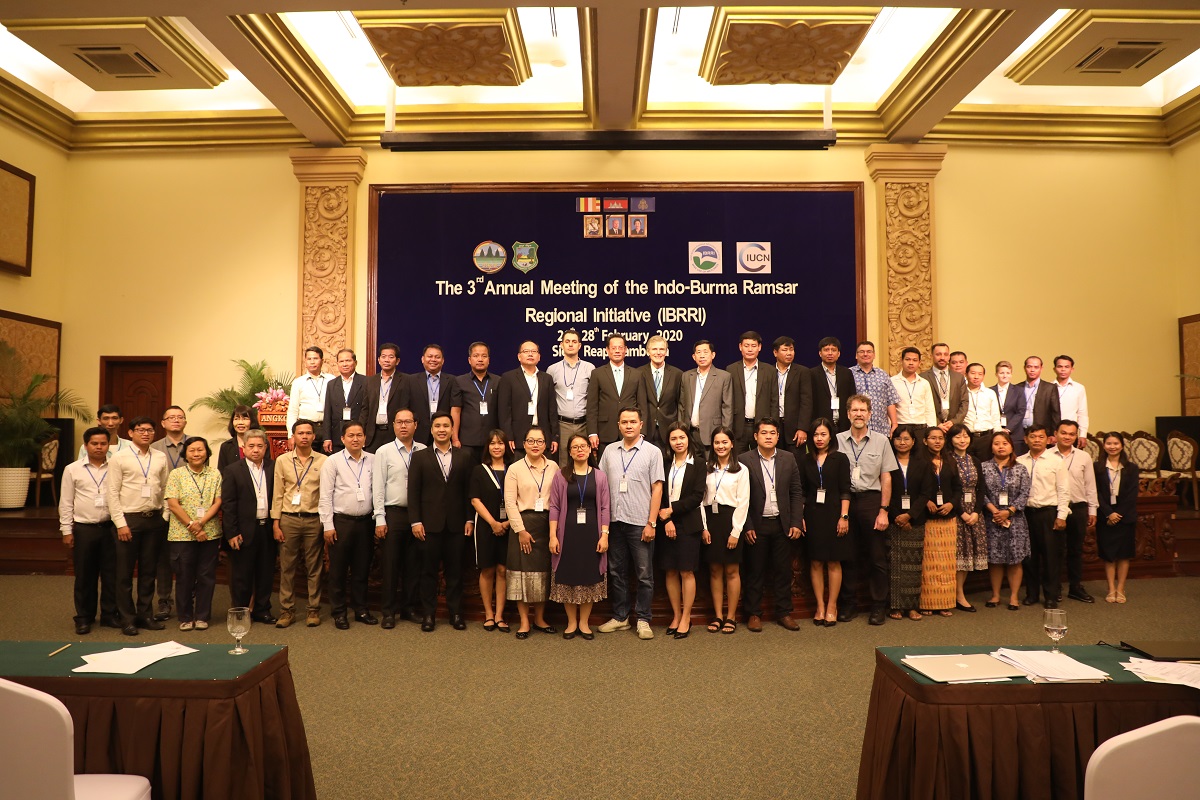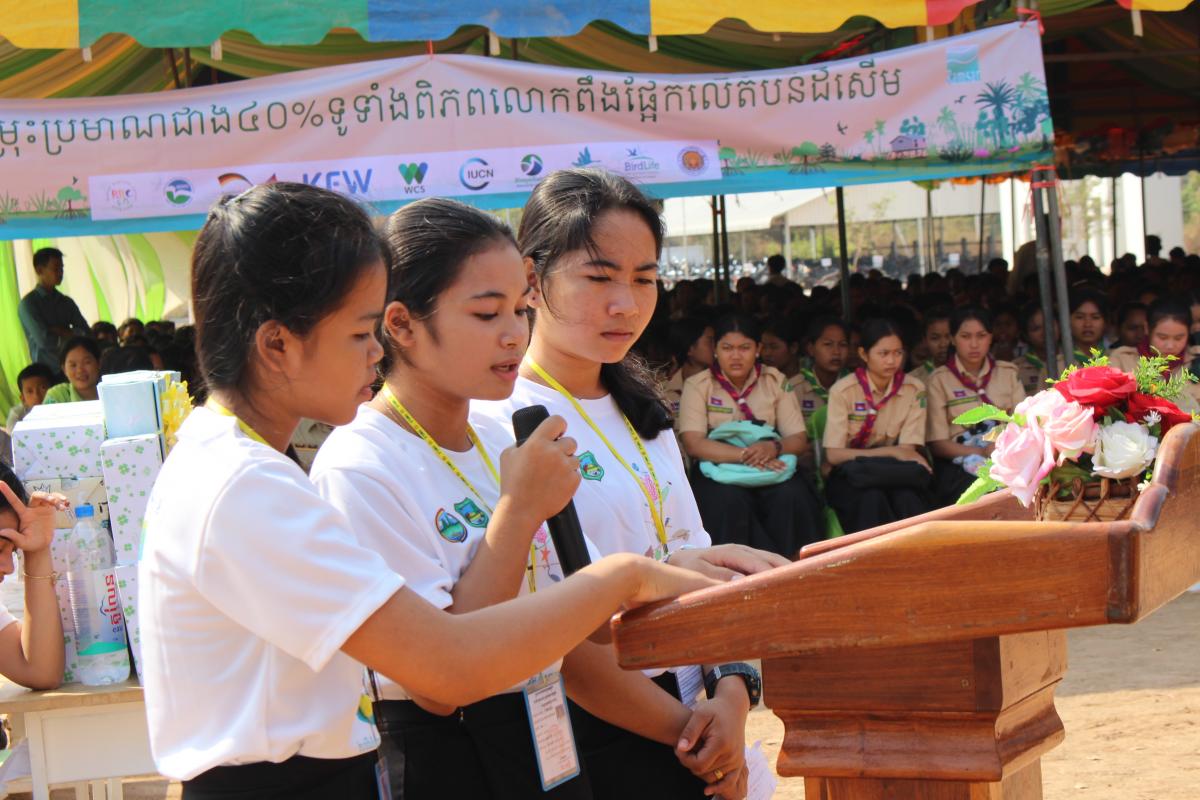Myanmar starts work on a national Red List
On July 23-27, 70 of Myanmar’s top species experts gathered at the Forest Research Institute in Yezin, near Nay Pyi Taw, to take important steps in the development of a National Red List of Threatened Species.
The event built on the success of a similar Red List training workshop that was also held in Yezin in July 2017, and the establishment of National Red List Working Groups for mammals, birds, reptiles and amphibians, plants, and aquatic species.
With the support of the Forest Department’s Nature and Wildlife Conservation Division, WCS, and WWF, IUCN facilitated three days of Red List training for specialists from Myanmar universities, international NGOs such as WCS, WWF, and FFI, and local NGOs including BANCA, MBNS, and FREDA.
The training covered a variety of topics including how to deal with data of varying quality, the nine Red List categories and five criteria, and how to apply these categories and criteria at the national or regional levels. By the end of the training, all participants had practiced carrying out Red List assessments using real data for species found in Myanmar.
Following the training, the seven members of the Reptiles and Amphibians Working Group spent two days working with the IUCN trainers to conduct the first set of assessments for Myanmar’s National Red List. 70 species of reptiles were assessed, including 30 species of freshwater and marine turtle, and 34 species of lizard. These draft assessments will now be independently reviewed prior to publishing.
Taking advantage of the wealth of expertise present, the event also included a consultation on updating the national protected species list associated with Myanmar’s new Biodiversity Law. More than 1,200 species were proposed for inclusion on the list as “Completely Protected”, “Normally Protected”, or “Seasonally Protected”.





